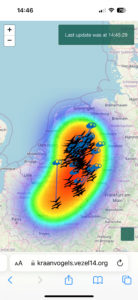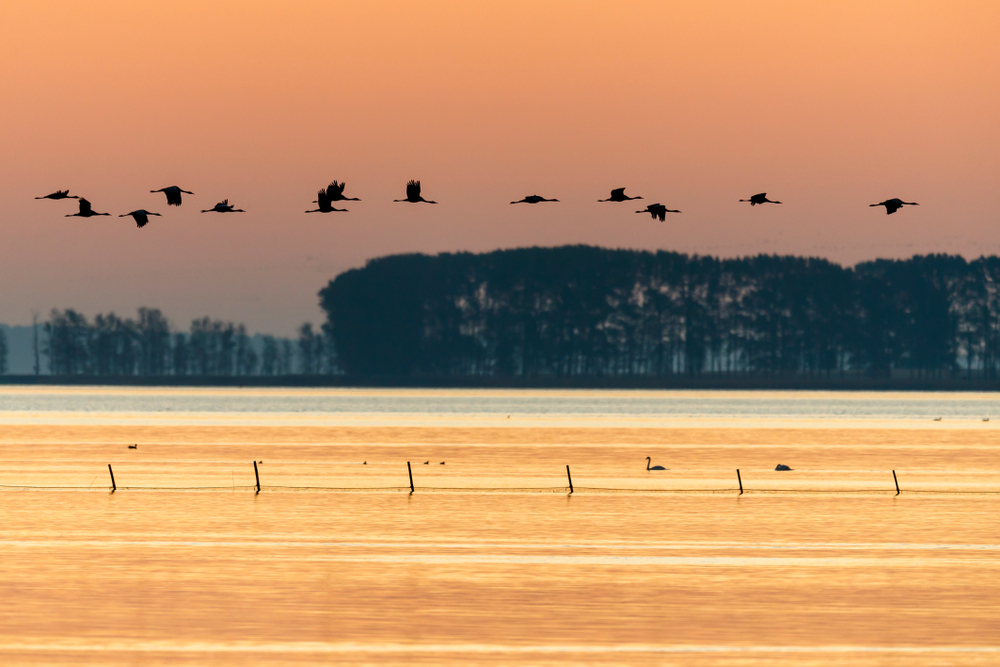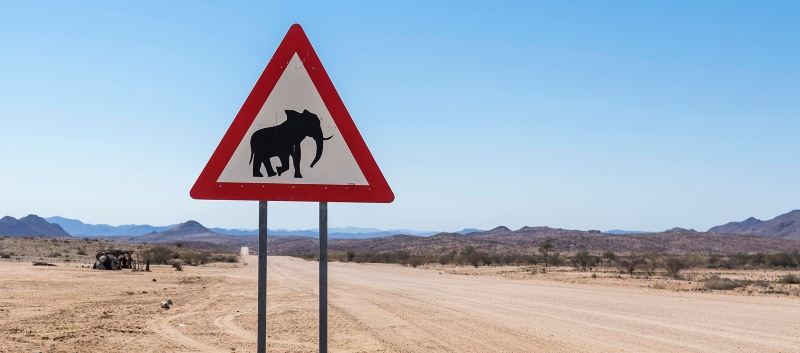Despite the unfavourable direction of the wind, today’s dropping temperatures cause a peak in the cranes’ fall migration. And a peak in the number of people visiting the crane radar developed by Assistant Professor Koen de Koning.
De Koning (Environmental Sciences Group) launched the crane radar last year, adding various improvements in the course of the year to increase the radar’s predictive value. The model now uses wind predictions to calculate more precisely where a group of cranes is likely to pass by.
Crane radar uses data made available by waarneming.nl. De Koning discovered first-hand that the accuracy of both Waarnemingen and his model leaves nothing to be desired last week. ‘I have been able to use Crane Radar to intercept a group of cranes for the first time last week’, he says. ‘I saw them approaching on the radar, and they passed over the campus at precisely the expected time.’
Many visitors

De Koning is not exactly the only person keeping a sharp eye on the Crane Radar. Last week, Thursday and Friday, when many thousands of cranes were airborne as well, over 1500 visited the site at a particular time. ‘I receive many enthusiastic reactions’, he says. ‘Some people follow the radar with their entire family.’
The fall migration is a little strange this year. De Koning: ‘Unfavourable weather conditions have kept the cranes on the ground for many weeks. But now that temperatures are dropping, the number of birds migrating is increasing rapidly.’ De Koning estimates that some 30,000 birds from Germany will make their way south today. With a little luck, some of them will pass over the eastern and central parts of the Netherlands. A small group was sighted (and heard) this morning in the Achterhoek.
Crane migration will taper off after today, De Koning expects. ‘A large group may decide to stay the winter in Germany unless temperatures drop even further. In that case, you can sometimes see the birds take to the skies as late as December.’
More tweaking
The assistant professor is not yet done tweaking the radar. ‘I think it would be great if we were able to predict if and when cranes are to be expected per town or city.’ De Koning does not expect to be able to add this functionality in time for the spring migration, which takes place in February and the beginning of May. ‘But in time for next year’s fall migration shouldn’t be a problem.’
’

 Tens of thousands of cranes are on their way from North Germany to central France today to reach their final destination in central Spain. Photo Shutterstock
Tens of thousands of cranes are on their way from North Germany to central France today to reach their final destination in central Spain. Photo Shutterstock 

